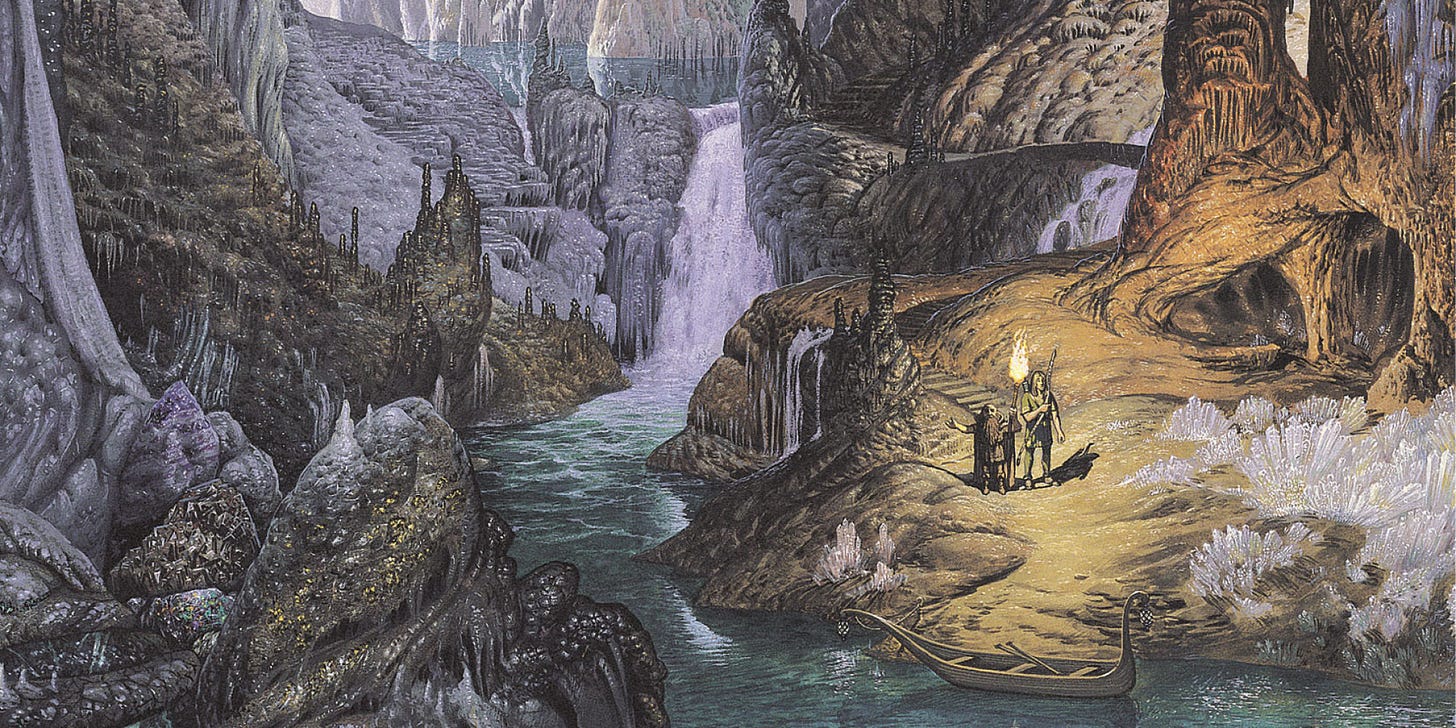J.R.R. Tolkien: Architect of the Imagination
Classical education finds in Tolkien a natural ally—a man who understood that the cultivation of wisdom requires not only logic and rhetoric but also imagination.
On this day, the anniversary of J. R.R. Tolkien’s birth (1892), we are reminded not merely of a man but of an intellectual epoch, one whose arcs span the disciplines of philology, mythology, literary creation, and the enduring question of human nature’s relationship to time and eternity. Tolkien, sub-creator par excellence, whose works reveal an architecture of imagination rivaling the most grandiose cathedrals of Western thought, offers an apologia of the necessity of the humanities in education. His corpus is not merely a collection of books and narratives; it is a curriculum in itself—a liberal arts education writ large in prose and poetry.
Tolkien’s role as a philologist and medievalist places him squarely in the tradition of those who view language not merely as a tool but as a cosmos unto itself. His meticulous crafting of the Elvish tongues, Sindarin and Quenya, stands as both a rebuke and a remedy to the modern utilitarian view of language education. These languages, fully formed with etymologies, grammars, and histories, transcend mere utility and embody the classical ideal that to study language is to study the soul of a people. In Middle-earth, Tolkien enacts a philological resurrection, revivifying the spirit of ancient cultures whose myths and sagas were nearly obliterated by time.
At the heart of Tolkien’s work is a profound engagement with the literary arts as a medium for moral and metaphysical inquiry. The Lord of the Rings, ostensibly a fantasy epic, is in fact a dialectic on the nature of power, freedom, and the responsibility of stewardship. The One Ring, that simultaneously alluring and damning artifact, serves as a synecdoche for the corruptive potential inherent in all dominion. Yet, Tolkien refuses the modern temptation toward nihilism. His characters—Frodo, Sam, Gandalf—embody virtues that the classical tradition upholds: courage, prudence, and humility. Through them, Tolkien reasserts the Aristotelian and Thomistic view that virtue is cultivated through struggle, that the good life is neither given nor assumed but arduously earned.
Tolkien’s works also stand as a profound defense of the literary arts. If the humanities concern themselves with exploring what it means to be human, then the act of “sub-creation,” as Tolkien himself termed it, is an extension of that inquiry. By fashioning worlds that reflect but do not mimic our own, Tolkien invites readers to participate in the co-creative act of imagining alternative moral and metaphysical realities. This is not escapism, as his critics have often charged, but anagogical exploration. Middle-earth is a mirror held to our world, revealing both its flaws and its divine potential. In this way, Tolkien’s fiction functions as a form of Socratic dialogue, drawing the reader into questions of ultimate concern: What does it mean to be free? To be good? To belong?
Moreover, Tolkien’s treatment of myth as a vehicle for truth underscores the indispensability of storytelling in classical education. In his seminal essay, “On Fairy-Stories,” Tolkien defends the mythopoeic mode as essential to the human spirit. Myths, he argues, are not falsehoods but higher truths clothed in the raiments of narrative. They speak to the primal, pre-rational aspects of humanity that reason alone cannot reach. To teach mythology, therefore, is not to dwell in fictions but to engage with the symbolic language of the soul. Classical education, with its emphasis on the trivium and quadrivium, finds in Tolkien a natural ally—a man who understood that the cultivation of wisdom requires not only logic and rhetoric but also imagination.
Tolkien’s academic rigor and creative genius converge most strikingly in his integration of the sacred and the profane, the timeless and the temporal. His works are saturated with a sacramental vision of reality that is deeply rooted in his Catholic faith. Yet, this vision is neither didactic nor exclusionary. Instead, it operates on the level of what C.S. Lewis called “baptized imagination,” offering even the secular reader a glimpse of transcendence through the seemingly mundane. The Shire, for instance, with its rolling hills and simple joys, is both a particular place and an archetype of Edenic longing. The journey to Mount Doom, fraught with despair and perseverance, echoes the via crucis, reminding us that redemption is both costly and communal.
In the context of classical education, Tolkien’s oeuvre is a reminder that the liberal arts are not merely a collection of disciplines but a way of seeing the world. To study Tolkien is to engage in the great conversation of Western civilization, to grapple with the perennial questions that have animated mankind since its beginning. His works illuminate the interconnectedness of the trivium and quadrivium: the linguistic precision of philology, the narrative logic of storytelling, the harmonic order of the cosmos as mirrored in his mythopoeic structure.
As we honor Tolkien on this day, let us remember his vision for the humanities—not as a retreat from modernity but as a way of redeeming it. His works challenge educators, students, and readers alike to reclaim the classical ideal of education as the formation of the whole person. For in the vast landscapes of Middle-earth, we find not just a world but a way of being—a reminder that to create, to imagine, and to preserve is to affirm the dignity of the human spirit.
Michael S. Rose, a leader in the classical education movement, is author of the New York Times bestseller Goodbye, Goodmen (Regnery), Ugly As Sin (Sophia Institute), The Art of Being Human (Angelico), Benedict XVI: The Man Who Was Ratzinger (Spence), and other books. His articles and op/eds have appeared in dozens of publications including The Wall Street Journal, Epoch Times, New York Newsday, and The Dallas Morning News.





